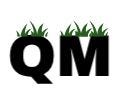Why Crop Modeling?
If for one day I could make one topic become the most popular on the internet, I would make it “crop modeling”.
Because crop modeling can save our planet.
Crop modeling is an agricultural tool that will help small scale producers increase their crop yields, and ultimately, help us feed the world.
Crop modeling uses algorithms to simulate crop growth in a variety of different environmental conditions. By researching and using crop modeling, we aim to determine the environmental conditions that crops do not grow the most optimally, and then ultimately determine the most optimized conditions to grow a certain crop in each region. By optimizing the conditions that crops grow in, overall crop yields can be increased, helping to better feed the world.
World Food Studies (WOFOST) is a very good example of crop modeling. It is “a simulation model for the quantitative analysis of the growth and production of annual field crops.” WOFOST is able to calculate crop outcomes like yields and water usage of a given location, as long as certain agricultural information is provided, mainly soil, weather, crop and crop management. It does its crop modeling based on how environmental conditions influence the underlying processes (ex. Photosynthesis, respiration, etc.) of crop growth.
In fact, WOFOST has already been used by some researchers and organizations to perform crop modeling. For example, it is being implemented in the European MARS crop forecasting system, as well as in the Global Yield Gap Atlas in order to estimate and optimize crop yields. If you would like to learn more, you can read more about the different places WOFOST has been used here.
